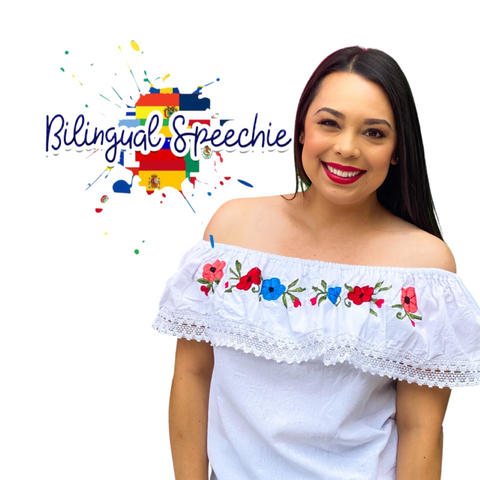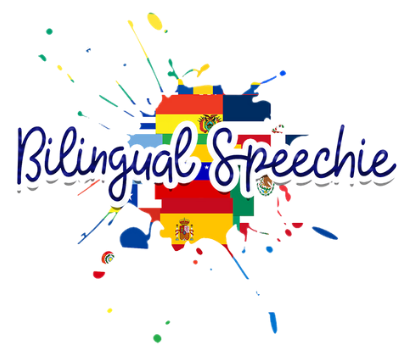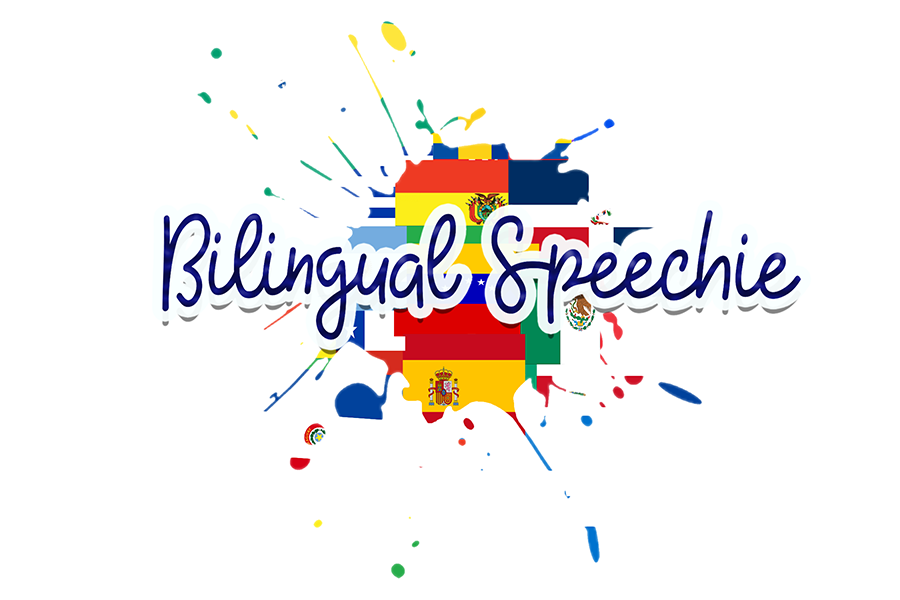by Liliana Diaz August 06, 2022
If you are a bilingual speech language pathologist and have some clients or students that need help trilling or rolling their R's then this article is a must read!
The trilled R is a very common phoneme in a variety of languages and probably one of the hardest sounds to produce and teach. In Spanish, trilled R is a high occurrence phoneme and a simple misarticulation can easily change the meaning of a word (Example: Carro vs. Caro / Car & Expensive). Yet unfortunately, there are not that many speech therapy resources out there that will provide you with a how-to guide on how to elicit the sound.
For that reason, I am here to help you! I am going to break down the steps that I take when teaching my students how to trill the R sound. I have over 9 years of experience teaching the trilled R sound and the tips and strategies that I am going to outline are based on what has worked for my students.
Becoming Familiar with the Trilled R
It might seem a little obvious at first, but honestly, you have to become familiar with placement. Trilled R is also known as "Double R / Doble R", "Strong R / R Fuerte", "Rolled R", and its phonetic term, voiced alveolar trill.
Trilled R is called voiced alveolar trill because of its location in the mouth. The sound is voiced and the tip of the tongue is directly behind the upper front teeth and slightly below the alveolar ridge.
The tongue should be completely relaxed and flat. The airflow should be directed along the center of the tongue. Relaxation is key because the airstream created will allow the tongue to vibrate.
What are phonotactic constraints?
Phonotactic constraints are rules and restrictions concerning the ways in which syllables can be created in a language. Restrictions can exist on the types of sounds that are allowed to occur next to each other as well as how they occur in the positions of various words. Why is this important? Well, you want to make sure that you choose appropriate word targets for your student. The last thing you would want to do is create a speech goal that is unobtainable because the word position you chose does not exist.
In Spanish, Trilled R can occur in the initial and medial position of words. It can occur after /l/, /n/, or /s/. Trilled R is always followed by a vowel. In Spanish, trilled R does not occur at the final position of words. See the following examples:
Initial position of words: Rosa
Medial position of words: Carro
Followed by L: Alrededor
Followed by N: Sonrisa
Followed by S: Israel
Ok, now that you have the basics down, let's talk about actually teaching your student how to produce the sound. I am going to break this down into 4 phases which are fundamental to the hierarchy that I follow when teaching the sound. See the hierarchy below:

Phase 1: Relaxation
As I mentioned above, relaxation is crucial to getting the tongue to vibrate. Most of the phonemes that are produced in English require active movement of the tongue. Active movement means that the tongue has to contract or move in a certain way in order to produce the sound. Trilled R requires the tongue to be at a super relaxed state in order to vibrate. I like to provide my students with an analogy of a flag waving in the wind. The flag allows the wind to decide the movement. We can say that our tongue is like the flag in which the airflow will trigger the vibration. Therefore, before I teach placement, I focus on teaching relaxation techniques to my student so that they are aware of how to "relax" their tongue.
I instruct my students to relax their facial muscles, drop their jaw and tongue (making sure it's not touching the hard palate). We will do this a couple of times in therapy. Then I instruct them to breathe in through their nose and out through their mouth while maintaining their tongue in a relaxed state. After a couple of breaths, I will also instruct them to breathe in through their nose and out through their mouth but this time, with their tongue touching the alveolar ridge.
Phase 2: Placement
In phase 2, we discuss the placement of trilled R or voiced alveolar trill. This includes discussing what it sounds like when your voice box is turned on and where your tongue goes when producing the sound. If your student is able to produce a /d/, /t/, or /l/ sound, then its a good idea to have your student practice saying these sounds so that they are familiar with where the alveolar ridge is located.
When producing the trilled R, your tongue needs to be in a flat and wide position. The edges of the tongue slightly tough the top of the molars and tip of the tongue slightly touches the alveolar ridge.
In this phase, I like to show my students a Youtube video that allows the student to visualize the placement of the tongue when it vibrates. The video I use is by the Youtube channel Glossika Phonics.
Phase 3: Vibration
Understanding how to vibrate your tongue might be difficult when you're unfamiliar with what a vibration sensation feels like. In this phase, I focus on showing my student what that vibration might feel like on their tongue. This can be shown in several ways. The first method will require the use of a Q-tip. You will instruct your student to say the /d/ sound really fast. As he/she is saying the sound, take the Q-tip and place it horizontally under their tongue. Lift the Q-tip so that you begin to restrict the student's airflow of the /d/ sound. The /d/ sound should now sound somewhat "squished" and with enough airflow production, it should trigger the tongue to slightly vibrate.

Another trick to help your student feel the sensation of vibrating is to have your student say the /d/ sound repeatedly and then place the Q-tip vertically under their tongue and move the Q-tip up and down.

Another strategy is to have your student produce raspberry sounds while maintaining his/her tongue tip on the alveolar ridge. This should create a buzzing or vibration sensation on the tip of their tongue.
Phase 4: Production
After spending some time on phases 1-3 we now move to putting together all of the elements learned (relaxation, placement/voicing, vibration). I like to elicit the trilled R sound with the production of other phonemes. The /d/ and /t/ phonemes are produced at the alveolar ridge therefore, it may be easier for your student to practice saying these sounds while trying to say the /r/ sound.
For the next couple of exercises, I like to utilize my trilled R warm-up activity which includes several visuals for these exercises. You can download it here.
Strategy 1: Instruct your student to say a DR-DR-DR sequence while hissing or puffing air.
Strategy 2: Instruct your student to say a TR-TR-TR sequence while hissing or puffing air
Strategy 3: Have your student produce a F sound while placing their tongue at the alveolar ridge. By placing the tongue on the alveolar ridge, you will restrict the airflow which should force the tongue to vibrate (if relaxed).
Strategy 4: For younger students, I instruct them to make vehicle sounds as in the sound "Vrrooom". The Trilled R Warm Up Worksheet includes a visual of a car and motorcycle and instruct my students to say "Vrrroommm" while sliding their finger along the arrow.
I really hope these strategies help you with your next trilled R client or student! Honestly, I wish would have had a resource like this one back in the day because it took me several years of frustration and my own research on the internet to finally figure out some of the best strategies for this sound. Please save and share this blog with others! And feel free to comment down below if you know of any other strategies that you think would be helpful!
Comments will be approved before showing up.
by Liliana Diaz December 14, 2023
by Liliana Diaz July 23, 2023
Have a client on your caseload that is demonstrating difficulty producing the CH sound? Perhaps you're a parent whose child is in speech therapy working on the CH sound? The CH sound can be a tricky sound to teach because it's hard to visually see what's going on inside the mouth when saying the sound. But no worries, here are some tips to help achieve that tricky CH sound.
by Liliana Diaz February 13, 2023 1 Comment

Who are we?
Bilingual Speechie LLC. is a small business dedicated to providing inclusive and engaging speech therapy resources and activities for bilingual children, parents, SLPs and educators.
Bilingual Speechie LLC promotes bilingualism and multilingualism by dispelling common myths, providing education on bilingual language development, and promoting heritage language maintenance amongst bilingual families.
About the Owner:
Liliana Diaz-Vazquez is a certified licensed bilingual speech language pathologist (SLP), currently practicing in Chicago, Illinois. She obtained her bachelor’s degree in communication disorders (2012) and her master’s degree in speech language pathology at Saint Xavier University (2014). She is a certified member of the American Speech-Language and Hearing Association (ASHA) since 2014, a member of the Illinois Speech and Hearing Association (ISHA) since 2014 and maintains licensure in the state of Illinois.
Liliana is a first-generation Mexican-American Latina, a small business owner, a full-time school-based SLP, & a bilingual parent, who takes pride in her roots, culture, & heritage language. She loves being able to share her experience as a Latina SLP, and a bilingual mom, as well as her culture & heritage language with the educator, SLP, and parent community.
Liliana Diaz-Vazquez has extensive experience working with the bilingual English and Spanish speaking population & multilingual population. She specializes in augmentative/alternative communication (AAC), bilingual language development and language delays/disorders in bilingual/multilingual children. She has also worked in the early intervention setting for several years where she gained vast experience working with interpreters and bilingual/multilingual families.
Liliana began creating digital bilingual resources and activities in 2014 out of need while working full-time in the school setting as a SLP. Liliana worked with many Spanish-speaking families and quickly realized that there were limited Spanish and bilingual speech therapy resources available for her students and their families. In addition, Liliana quickly became aware that there was a need for education about bilingualism and typical bilingual language development as many of the families she worked with had encountered misinformation about bilingualism. Liliana began developing resources and eventually started Bilingual Speechie LLC with the mission to provide education to SLPs and families about bilingualism, as well as provide inclusive and diverse materials for speech therapy in order to help bilingual families and SLPs gain access to appropriate bilingual materials for children with communication disorders.
Today Liliana currently works full-time in the Chicago public school setting as a lead bilingual SLP where she consults and collaborates with SLPs daily to help them understand how to assess and provide culturally and linguistically appropriate services for bilingual and/or multilingual students. She also runs her small business, Bilingual Speechie LLC, and is on a mission to expand and grow her business so that all SLPs, educators, and families can have access to inclusive, diverse, and bilingual resources in a variety of languages for speech therapy.
Professional Development:
Liliana has vast experience as a speaker/presenter and has presented at several conferences over the years. You can view all previous conferences and topics that Liliana has presented on here. Liliana is available to present on topics such as best practices when working with multilingual populations, bilingual speech/language assessment and treatment, goal writing with multilingual populations and much more. If you are interested in booking Liliana for a conference or event please don't hesitate to send an email at lilianadiaz@bilingualspeechie.com
 English
en
English
en
 English
en
English
en


Liliana Diaz
Author